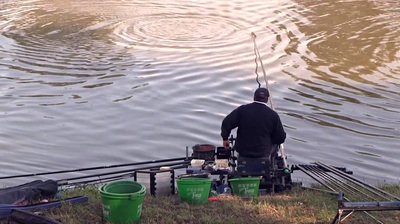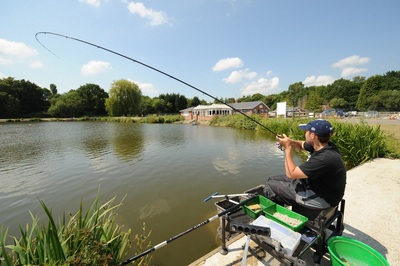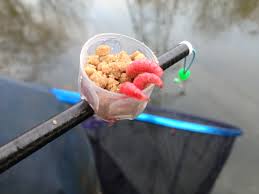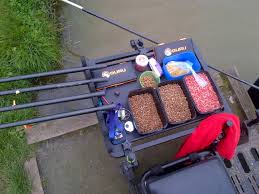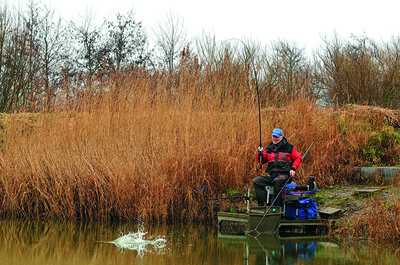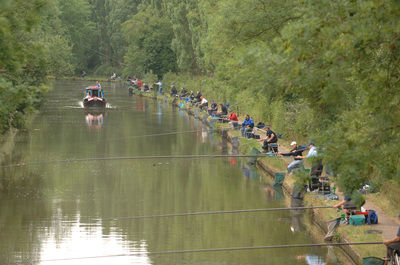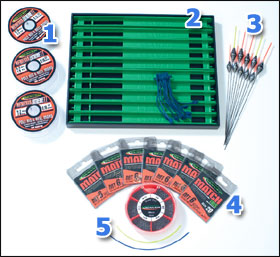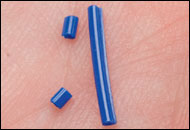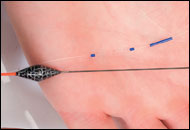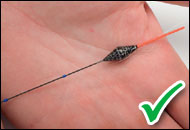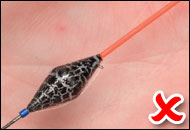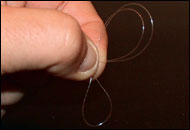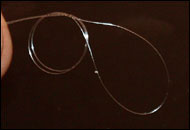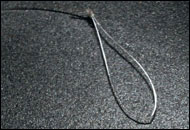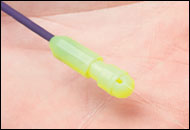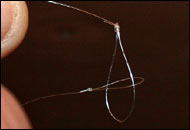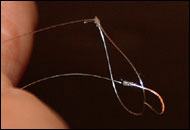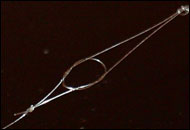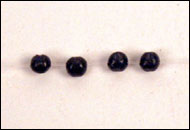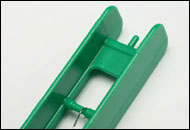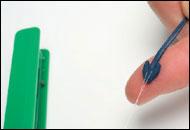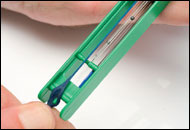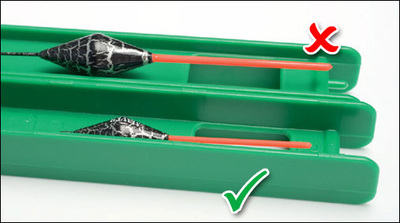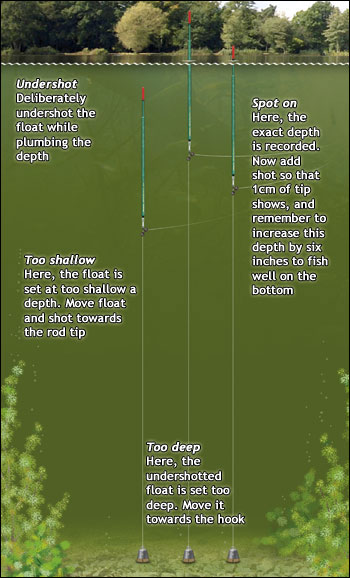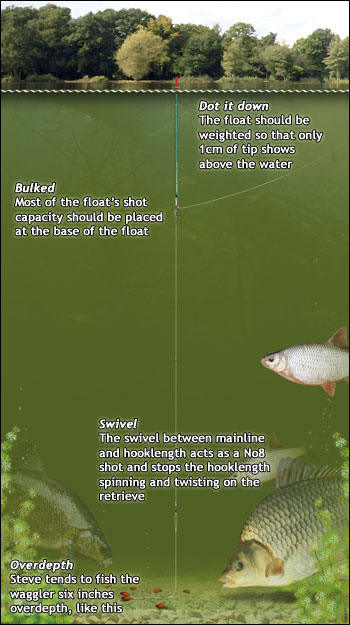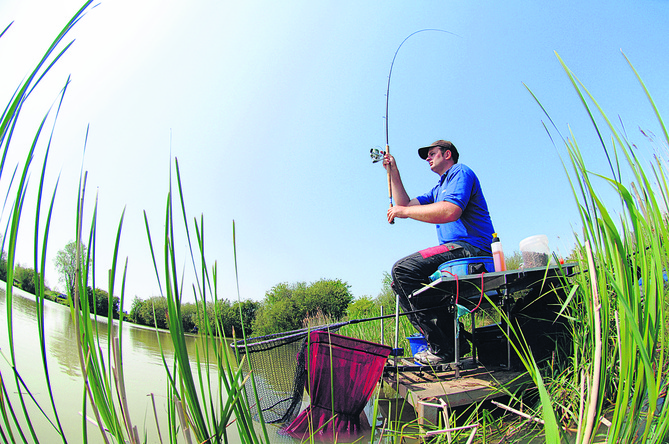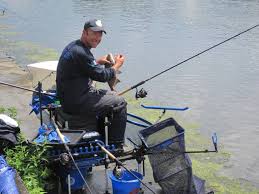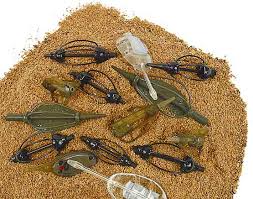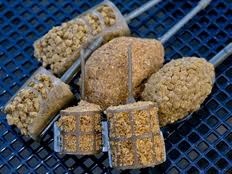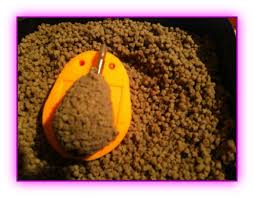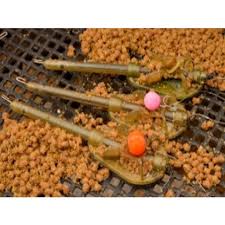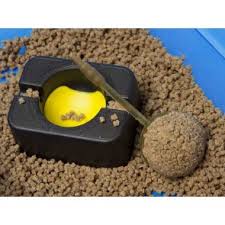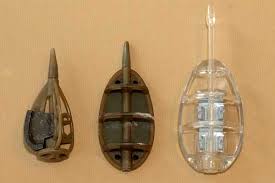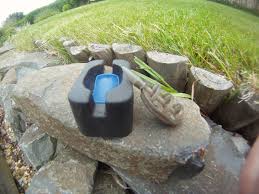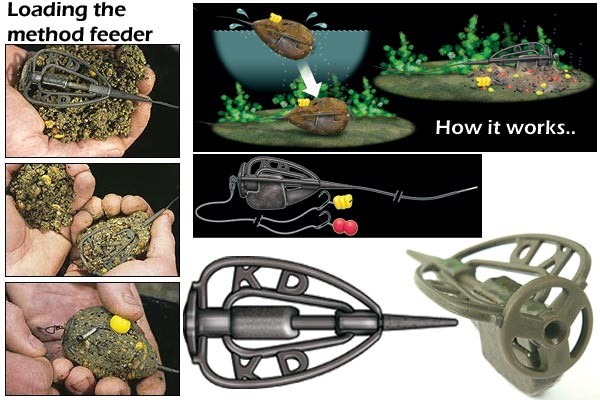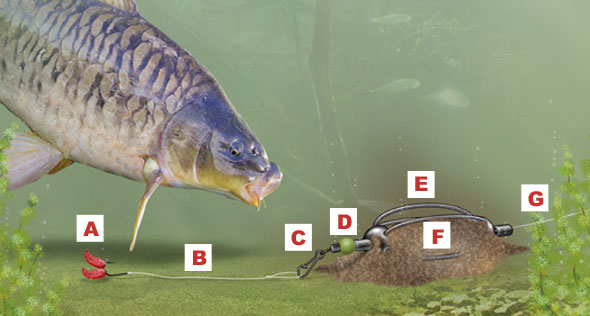MATCH ANGLING
Match angling is made up of three styles of fishing. Depending on circumstances and species you are planning to target, an Angler can decide to do only one or even all three styles in one session. These styles are very effective to target a wide variety of fish including Bream and Perch. The three styles of match angling are:
1. Pole Fishing
2. Waggler Fishing
3. Feeder fishing
A big part of what we want to achieve here at Bank Angler is to get more people involved in Freshwater fishing. The following guides are therefor specifically aimed at providing potential new anglers with as much basic information as possible. This basically forms the foundation and we will in future add both overseas and local articles and tips to build on this.
Most of the equipment needed will be imported from the UK and that is why we use Pounds instead of Australian Dollars. There are some Australian shops that will carry Bank Angler products as well as some Match Angling equipment and we will provide you with a list in the near future. The following are just some of the UK based online shops that Australian Anglers currently make use of but like with any online shopping comes with variable levels of satisfaction.
www.benwick-sports.co.uk
www.billyclarke.co.uk
www.tedcarter.co.uk
www.dragoncarpdirect.com
www.tacklebox.co.uk
1. Pole Fishing
2. Waggler Fishing
3. Feeder fishing
A big part of what we want to achieve here at Bank Angler is to get more people involved in Freshwater fishing. The following guides are therefor specifically aimed at providing potential new anglers with as much basic information as possible. This basically forms the foundation and we will in future add both overseas and local articles and tips to build on this.
Most of the equipment needed will be imported from the UK and that is why we use Pounds instead of Australian Dollars. There are some Australian shops that will carry Bank Angler products as well as some Match Angling equipment and we will provide you with a list in the near future. The following are just some of the UK based online shops that Australian Anglers currently make use of but like with any online shopping comes with variable levels of satisfaction.
www.benwick-sports.co.uk
www.billyclarke.co.uk
www.tedcarter.co.uk
www.dragoncarpdirect.com
www.tacklebox.co.uk
1. POLE FISHING FOR BEGINNERS.
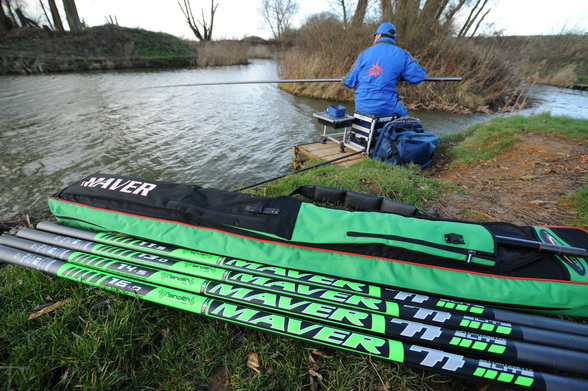
THE POLE.
Poles come in many different types from Margin to Match and with that comes a big difference in prices from £40 to £4,000 plus. Yes they are expensive, but you do not need an expensive Pole to start with. I always recommend buying a cheap margin Pole first, they are easy to handle and you will soon know whether or not pole fishing is for you. Having a margin pole is always handy, even if you decide to get yourself a proper full length pole.
Every pole is basically the same, it consists of sections that you put together, simple. Knowing how a cheap Pole goes together is like knowing how a expensive one does. The top section known as the "Top Kits" are the only things that might be different simply because of the elastic and bungs that are used. Bungs are what the elastic is attatched to inside your top kits, these come in different sizes and are used with different elastic ratings. This is one area that confuses many because it is a mine field with so many elastics to choose from. Power top kits are normally elastecated in two sections while Match Top kits go through three. Power kits are for the margin work or big fish, match kits are for the finer points of our game and normaly have a lighter elastic in them. Match kits will take elastics up to around rating 10 whereas power kits will go right up to rating 20 plus. Always make sure what your pole's rating is and never exceed it.
Poles come in many different types from Margin to Match and with that comes a big difference in prices from £40 to £4,000 plus. Yes they are expensive, but you do not need an expensive Pole to start with. I always recommend buying a cheap margin Pole first, they are easy to handle and you will soon know whether or not pole fishing is for you. Having a margin pole is always handy, even if you decide to get yourself a proper full length pole.
Every pole is basically the same, it consists of sections that you put together, simple. Knowing how a cheap Pole goes together is like knowing how a expensive one does. The top section known as the "Top Kits" are the only things that might be different simply because of the elastic and bungs that are used. Bungs are what the elastic is attatched to inside your top kits, these come in different sizes and are used with different elastic ratings. This is one area that confuses many because it is a mine field with so many elastics to choose from. Power top kits are normally elastecated in two sections while Match Top kits go through three. Power kits are for the margin work or big fish, match kits are for the finer points of our game and normaly have a lighter elastic in them. Match kits will take elastics up to around rating 10 whereas power kits will go right up to rating 20 plus. Always make sure what your pole's rating is and never exceed it.
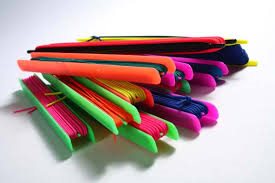
ELASTICS AND FISHING LINE.
If you ask four pole anglers which elastic to use, you will get four different answers. The elastics basically have the same function as a reel. Your elastic will usually be determent by the size of fish you are targeting as well as how much stretch you can have to avoid snags in the water and around the margins. The four main categories for elastics are, Solid, Latex, Hydro, Hollow. The stretch factor comes into play here, some elastics are very stretchy like Latex,Hollow and Hydro. Solid tend to not stretch so far but that can still be up to 5 times it's length. This is ideal for situations where you want to get fish in quickly or put the brakes on a fish to prevent it from going into the reeds. Pole elastics are available in sizes 1 to 20 with 1 being the weakest and 20 the strongest.
The fishing line (pole rig) is connected to the pole elastic via a connector. The connector have a quick change clip that makes changing rigs easy.
The fishing lines used are generally monofilament or fluorocarbon, the big difference is that fluorocarbon lines are less visible to fish but they also come at a price. The pole rig is made up of two pieces of line namely the "mainline" and "hook length". It is important to use a thinner hook length because it is less visible to the fish, your bait will have a more natural fall through the water and it will be better for the fish if your line does break. The strength of these lines will again be determined by your target species, size of the fish and snags in the water. You would not for instance use a mainline of 10lb with a 1lb hook length as you would probably "crack off" on the strike/lift, something like 4lb mainline and 2lb hook length is more balanced. This is a ROUGH GUIDE to line diameters and APPROXIMATE breaking strains. Each maufacturer will have their own and can be found on their relevant websites.
Line Diameter/ Approx Breaking Strain
0.06mm 12oz
0.07mm 1lb 2oz
0.08mm 1lb 12oz
0.09mm 2lb
0.10mm 2lb 6oz
0.11mm 2lb 14oz
0.12mm 3lb 4oz
0.14mm 4lb 12oz
0.16mm 5lb 10oz
0.18mm 6lb 8oz
0.20mm 7lb 12oz
0.22mm 9lb
0.24mm 10lb 4oz
0.26mm 11lb 6oz
If you ask four pole anglers which elastic to use, you will get four different answers. The elastics basically have the same function as a reel. Your elastic will usually be determent by the size of fish you are targeting as well as how much stretch you can have to avoid snags in the water and around the margins. The four main categories for elastics are, Solid, Latex, Hydro, Hollow. The stretch factor comes into play here, some elastics are very stretchy like Latex,Hollow and Hydro. Solid tend to not stretch so far but that can still be up to 5 times it's length. This is ideal for situations where you want to get fish in quickly or put the brakes on a fish to prevent it from going into the reeds. Pole elastics are available in sizes 1 to 20 with 1 being the weakest and 20 the strongest.
The fishing line (pole rig) is connected to the pole elastic via a connector. The connector have a quick change clip that makes changing rigs easy.
The fishing lines used are generally monofilament or fluorocarbon, the big difference is that fluorocarbon lines are less visible to fish but they also come at a price. The pole rig is made up of two pieces of line namely the "mainline" and "hook length". It is important to use a thinner hook length because it is less visible to the fish, your bait will have a more natural fall through the water and it will be better for the fish if your line does break. The strength of these lines will again be determined by your target species, size of the fish and snags in the water. You would not for instance use a mainline of 10lb with a 1lb hook length as you would probably "crack off" on the strike/lift, something like 4lb mainline and 2lb hook length is more balanced. This is a ROUGH GUIDE to line diameters and APPROXIMATE breaking strains. Each maufacturer will have their own and can be found on their relevant websites.
Line Diameter/ Approx Breaking Strain
0.06mm 12oz
0.07mm 1lb 2oz
0.08mm 1lb 12oz
0.09mm 2lb
0.10mm 2lb 6oz
0.11mm 2lb 14oz
0.12mm 3lb 4oz
0.14mm 4lb 12oz
0.16mm 5lb 10oz
0.18mm 6lb 8oz
0.20mm 7lb 12oz
0.22mm 9lb
0.24mm 10lb 4oz
0.26mm 11lb 6oz
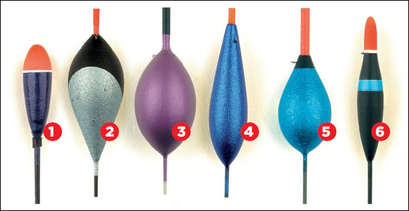
POLE FLOATS
These come in all shapes and sizes but basically you only need 6 types to cover most of your fishing.
1. Dibber
A short float that’s ideal when presenting a bait in shallow water tight to the near or far bank of a commercial lake or canal. Do not use in a river. The fat tip makes the dibber highly visible so they are popular with anglers struggling to see a fine-tipped float. Best fished slightly overdepth with a split shot touching the bottom to anchor the float. Not great in windy conditions as the short stem doesn’t stabilise the float.
2. Body-Up
The fat body and distinct shoulders make this a very buoyant float that is suitable for fishing rivers, it ‘rides’ the current well and allows the angler to hold back the float against the flow to slow down the speed the hookbait goes through the swim.
Make sure the bulk of the weight added to the rig is bunched in the last third of the line to ‘bomb’ the hookbait to the bottom of the river and stop it getting lifted away by the river’s flow.
3. Round
A popular and versatile float. In the smaller sizes (up to 1gram) it is best used in stillwaters, especially if there is a wind blowing.
The wide, buoyant body and the long stem helps keep the float stable in the water in rough conditions. In the larger sizes (1.5 gram and above) this float can also be used in slow flowing rivers.
4. Pear
An elongated pear-shaped body gives this float some stability in canals and commercial fisheries. The slender shape helps make this a responsive float that efficiently registers bites from shy-biting species like roach, skimmer bream and crucians.
Good for use with maggots, casters and pinkie hookbaits especially at this time of year when bites become more subtle.
5. Body-Down
A more pronounced shape than the pear with a fatter body for greater buoyancy and stability in windy conditions. Best used in swims at least six feet deep and the bulk of the shotting should be placed in the bottom third of the rig.
6. Shallow
A short, small bodied float with a fat cane tip for buoyancy and visibility. Made for presenting hookbaits in the mid-to-upper layers of commercial lakes.
These come in all shapes and sizes but basically you only need 6 types to cover most of your fishing.
1. Dibber
A short float that’s ideal when presenting a bait in shallow water tight to the near or far bank of a commercial lake or canal. Do not use in a river. The fat tip makes the dibber highly visible so they are popular with anglers struggling to see a fine-tipped float. Best fished slightly overdepth with a split shot touching the bottom to anchor the float. Not great in windy conditions as the short stem doesn’t stabilise the float.
2. Body-Up
The fat body and distinct shoulders make this a very buoyant float that is suitable for fishing rivers, it ‘rides’ the current well and allows the angler to hold back the float against the flow to slow down the speed the hookbait goes through the swim.
Make sure the bulk of the weight added to the rig is bunched in the last third of the line to ‘bomb’ the hookbait to the bottom of the river and stop it getting lifted away by the river’s flow.
3. Round
A popular and versatile float. In the smaller sizes (up to 1gram) it is best used in stillwaters, especially if there is a wind blowing.
The wide, buoyant body and the long stem helps keep the float stable in the water in rough conditions. In the larger sizes (1.5 gram and above) this float can also be used in slow flowing rivers.
4. Pear
An elongated pear-shaped body gives this float some stability in canals and commercial fisheries. The slender shape helps make this a responsive float that efficiently registers bites from shy-biting species like roach, skimmer bream and crucians.
Good for use with maggots, casters and pinkie hookbaits especially at this time of year when bites become more subtle.
5. Body-Down
A more pronounced shape than the pear with a fatter body for greater buoyancy and stability in windy conditions. Best used in swims at least six feet deep and the bulk of the shotting should be placed in the bottom third of the rig.
6. Shallow
A short, small bodied float with a fat cane tip for buoyancy and visibility. Made for presenting hookbaits in the mid-to-upper layers of commercial lakes.
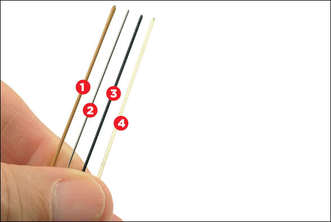
STEMS
The thin stem poking out of the base of the float’s body is called the stem. The weight and buoyancy of the stem effects the behaviour of the float and dictates when they should be used…
1. Cane
Similar to nylon - very light and strong. Use for shallow rigs but not in strong winds when the float will get blown around a lot.
2. Wire
Great when fishing in windy conditions. A long, wire stem helps keep the float stable while it also helps ‘cock’ the float quickly in the water and reduces the amount of shot needed.
3. Carbon
Similar properties to wire stems but they are lighter, this can help if you want to fish a very sensitive rig.
4. Nylon
Very light and strong. Best for ‘up-in-the-water’ rigs when you want the bait to sink very slowly.
The thin stem poking out of the base of the float’s body is called the stem. The weight and buoyancy of the stem effects the behaviour of the float and dictates when they should be used…
1. Cane
Similar to nylon - very light and strong. Use for shallow rigs but not in strong winds when the float will get blown around a lot.
2. Wire
Great when fishing in windy conditions. A long, wire stem helps keep the float stable while it also helps ‘cock’ the float quickly in the water and reduces the amount of shot needed.
3. Carbon
Similar properties to wire stems but they are lighter, this can help if you want to fish a very sensitive rig.
4. Nylon
Very light and strong. Best for ‘up-in-the-water’ rigs when you want the bait to sink very slowly.
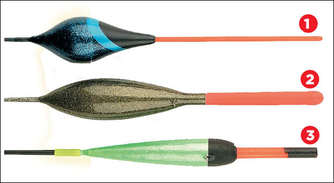
BRISTLES
The tip inserted into a pole float is called the bristle. The material each bristle is made from performs a different task, as this guide explains…
1. Carbon
Very sensitive because they sink, only the buoyant body keeps the tip above the water. Brittle and easily broken. Great when using small baits for shy-biting species but floats with a carbon tip are difficult to shot up, you must be precise. A thin smear of Vaseline rubbed on the tip can make it slightly more buoyant.
2. Cane
Buoyant, and strong. They are ideal for using with heavier baits, such as meat and corn, as the buoyancy helps to hold up the bait.
The strength is useful when fishing tight to lilies, weed or rushes for big carp, if the float is dragged through the vegetation the tip won’t get broken. Thicker tip allows for greater visibility.
3. Nylon
More durable than a carbon stem, slightly buoyant and therefore easier to shot up and use. Available in a variety of thicknesses, the fatter the nylon bristle the more buoyant they are.
That basically covers pole floats.There are thousands of designs,shapes,colours and manufacturers and no hard and fast rules as to how too fish them.These are just the basic types you would use to start you catching.
The tip inserted into a pole float is called the bristle. The material each bristle is made from performs a different task, as this guide explains…
1. Carbon
Very sensitive because they sink, only the buoyant body keeps the tip above the water. Brittle and easily broken. Great when using small baits for shy-biting species but floats with a carbon tip are difficult to shot up, you must be precise. A thin smear of Vaseline rubbed on the tip can make it slightly more buoyant.
2. Cane
Buoyant, and strong. They are ideal for using with heavier baits, such as meat and corn, as the buoyancy helps to hold up the bait.
The strength is useful when fishing tight to lilies, weed or rushes for big carp, if the float is dragged through the vegetation the tip won’t get broken. Thicker tip allows for greater visibility.
3. Nylon
More durable than a carbon stem, slightly buoyant and therefore easier to shot up and use. Available in a variety of thicknesses, the fatter the nylon bristle the more buoyant they are.
That basically covers pole floats.There are thousands of designs,shapes,colours and manufacturers and no hard and fast rules as to how too fish them.These are just the basic types you would use to start you catching.
SHOTTING GUIDE
This to most people is the most confusing part. When making up your pole rig, you will be putting very small weights (styls or shot) on your mainline to make you float stand up in the water with exact buoyancy. Some floats come with numbers on the side i.e.
4X12 this is the STYL weight if shotted with styls. Styl weights have been used for decades by some of the world's top anglers. Even today, they are perfect for making a slow falling on the drop shotting, or fine adjustments to delicate rigs.
The markings in some cases may be like this, 0.2g, it stands for the weight in GRAMMES needed to shot the float.THE RULE OF THUMB IS THAT 0.1g IS EQUAL TO 1 FOOT OF DEPTH SO 0.5g WOULD BE FOR A FLOAT TO BE FISHED IN 5 FEET OF WATER.
The markings may just say 5no 10s this is the weight in SHOT.The most common are the first two.
As i have said before this is just a rough guide to the weight to shot your floats,trial and error and using them when you are fishing will give you a better idea of what you need to do.
This is a ROUGH GUIDE to the most common sizes.
This to most people is the most confusing part. When making up your pole rig, you will be putting very small weights (styls or shot) on your mainline to make you float stand up in the water with exact buoyancy. Some floats come with numbers on the side i.e.
4X12 this is the STYL weight if shotted with styls. Styl weights have been used for decades by some of the world's top anglers. Even today, they are perfect for making a slow falling on the drop shotting, or fine adjustments to delicate rigs.
The markings in some cases may be like this, 0.2g, it stands for the weight in GRAMMES needed to shot the float.THE RULE OF THUMB IS THAT 0.1g IS EQUAL TO 1 FOOT OF DEPTH SO 0.5g WOULD BE FOR A FLOAT TO BE FISHED IN 5 FEET OF WATER.
The markings may just say 5no 10s this is the weight in SHOT.The most common are the first two.
As i have said before this is just a rough guide to the weight to shot your floats,trial and error and using them when you are fishing will give you a better idea of what you need to do.
This is a ROUGH GUIDE to the most common sizes.
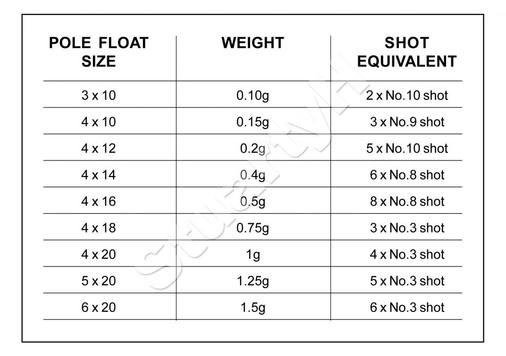
HOOKS
Yet again, hook preference is down to the individual and how they fish. We now have a vast array of hooks specifically designed for a certain purpose. Again it's the BALANCE of the hook to the hookbait, it's for example no good putting a single Corn on a size 20 hook. Below is a ROUGH GUIDE to what bait to use on a specific hook size. The list include a lot of bait typically used in the UK but it will still give you a good indication.
Size 26 Bait- joker,bloodworm
Size 24 Bait- joker,bloodworm,squatt
Size 22 Bait- Squatt,bloodworm,pinkie
Size 20 Bait- 2xpinkies,maggot,caster,punched bread,hemp
Size 18 Bait- Maggot,caster,punched bread,redworm,expander pellet,hemp,tares.
Size 16 Bait- 2xmaggot,2xcaster,punched bread,redworm,half a dendrobena,sweetcorn,expander pellet,meat,tares.
Size 14 Bait- Breadflake,3xmaggot,2xsweetcorn,worm(red and dendros),cocktails,expander pellet.
Size 12 Bait- Breadflake,paste,meat,3xsweetcorn,cocktails,pellet.
Size 10 Bait- Paste,meat,bread crust.
This is just a standard list. Some anglers use specific patterns for certain baits and with the advent of banded pellets and mini boilies it is just a case of experimenting on the bank.
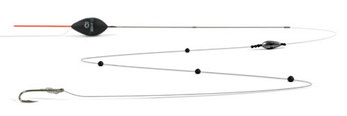
TYING A POLE RIG
Here Maver-backed Jamie Masson shows how to make a pole rig at home, from individual components, so you have a complete set-up ready to fish with. Plus you'll be able to make the perfect pole rig for tackling your favourite venue. What you’ll need is:
1) Mono for your mainline
2) Pole winders and anchors.
3) Pole floats.
4) Hooks or "hooks to nylon"
5) Silicone pole sleeve.
6) A variety of shot.
1. Start by cutting three pieces of silicone pole float sleeves, two small and one three-times as long
2. Thread the rig line through the float eye then thread on three pieces of silicone in this order
3. Push the pieces of sleeve on to the float’s stem. The top piece is placed 1in below float’s body
4. Don’t push it right up to the float’s body as this causes too much pressure on the float’s eye
5. In the end of the mono above the float, double over the line and form a loop
6. Pass the tag end through the loop twice to form a double overhand knot
7. Lubricate with spit and pull the knot tight to form a loop in the top of the rig
8. This loop is used to attach the rig to the stonfo connector when you want to fish the rig.
9. To attach hooklink, make a loop in end of the mainline and pass through the hooklink loop
10. Now pass the hook through the loop in the end of the mainline
11. Pull the mainline and hooklink tight to form the loop to loop knot.
12. With the hooklink on, shot the float using the previously discussed "Shotting Guide"
13. To place the finished rig on a winder, first place the hook on to the winder’s peg
14. Carefully wind the rig on to the winder,then place a rubber winder anchor into the end loop
15. Pull the rubber pole winder anchor and slot it over the peg in the end of the winder
16. Always make sure the float sits in the deeper side of the winder so it doesn’t get damaged in your box
2. Thread the rig line through the float eye then thread on three pieces of silicone in this order
3. Push the pieces of sleeve on to the float’s stem. The top piece is placed 1in below float’s body
4. Don’t push it right up to the float’s body as this causes too much pressure on the float’s eye
5. In the end of the mono above the float, double over the line and form a loop
6. Pass the tag end through the loop twice to form a double overhand knot
7. Lubricate with spit and pull the knot tight to form a loop in the top of the rig
8. This loop is used to attach the rig to the stonfo connector when you want to fish the rig.
9. To attach hooklink, make a loop in end of the mainline and pass through the hooklink loop
10. Now pass the hook through the loop in the end of the mainline
11. Pull the mainline and hooklink tight to form the loop to loop knot.
12. With the hooklink on, shot the float using the previously discussed "Shotting Guide"
13. To place the finished rig on a winder, first place the hook on to the winder’s peg
14. Carefully wind the rig on to the winder,then place a rubber winder anchor into the end loop
15. Pull the rubber pole winder anchor and slot it over the peg in the end of the winder
16. Always make sure the float sits in the deeper side of the winder so it doesn’t get damaged in your box
AT THE WATER:
Set up your fishing station
Firstly get your seatbox in a position where you can fish comfortably. Ideally, when sitting on your box you should aim to have your thighs in a horizontal position and at right angles to your lower leg. A box with adjustable legs helps a great deal in achieving a comfortable position.
Set up your landing net and handle, your bait, catapult, disgorgers and all other items you will require for your session close at hand to save you having to get up whilst fishing.
Mix your groundbait if using it and again keep it close to hand.
Position your pole roller
The use of a pole roller will greatly assist you and also goes a long way to preventing breaking your pole sections as well as keeping them off the floor when shipping backwards and forwards. It is important to position your roller to achieve a good balance when fishing.
With the pole on the roller, gently ship out the pole. When the last section leaves the roller note what happens. If the pole tip goes up and the butt section drops down, you have positioned the roller too far away. Likewise, if the tip drops down and the butt section jars up you have the roller too close to you.
What you are looking for is for the pole to balance in your hands when it leaves the roller. Balancing the pole helps to prevent rig tangles when shipping out, and makes shipping out with a pole pot full of feed.
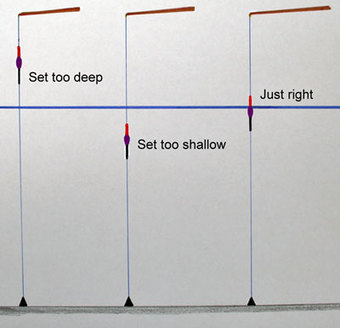
Plumbing the depth
Connect the rig to the Stonfo connector on the end of the pole. Attach a lead plummet to the hook and ship out the rig to the area you will be fishing in.
As with waggler fishing you are looking to fish with just the float tip visible above the water. Simply slide the float up or down the line to achieve the correct depth so the float tip is visible with the plummet touching the bottom. Plumb several areas to get a good idea of the bottom contours.
When you have found the depth, you may be left with excess line between pole tip and float. On a calm still day aim to have between 9" to 18" of line between tip and float. In windy weather it may be necessary to have more line. A short line between tip and float enables a quick and efficient strike when a fish takes the bait. If you are going to fish more than 1 spot change topkits and repeat the process.
Start fishing
Feed your chosen swim with groundbait by either throwing it in or putting in with a feed cup on the end of your pole. Add a few samples of your hookbait using either the pole pot or catapult. Bait the hook, then gently and smoothly ship out the pole to your chosen swim by rolling the pole forward on the roller and passing it smoothly through your hands. Aim to keep the rig in the water at all times as this prevents tangles.
When the pole tip is above your chosen swim, gently lay the rig on the water lengthways. The shot on the line will pull the line under the water and cock the float. Now you are pole fishing.
Connect the rig to the Stonfo connector on the end of the pole. Attach a lead plummet to the hook and ship out the rig to the area you will be fishing in.
As with waggler fishing you are looking to fish with just the float tip visible above the water. Simply slide the float up or down the line to achieve the correct depth so the float tip is visible with the plummet touching the bottom. Plumb several areas to get a good idea of the bottom contours.
When you have found the depth, you may be left with excess line between pole tip and float. On a calm still day aim to have between 9" to 18" of line between tip and float. In windy weather it may be necessary to have more line. A short line between tip and float enables a quick and efficient strike when a fish takes the bait. If you are going to fish more than 1 spot change topkits and repeat the process.
Start fishing
Feed your chosen swim with groundbait by either throwing it in or putting in with a feed cup on the end of your pole. Add a few samples of your hookbait using either the pole pot or catapult. Bait the hook, then gently and smoothly ship out the pole to your chosen swim by rolling the pole forward on the roller and passing it smoothly through your hands. Aim to keep the rig in the water at all times as this prevents tangles.
When the pole tip is above your chosen swim, gently lay the rig on the water lengthways. The shot on the line will pull the line under the water and cock the float. Now you are pole fishing.
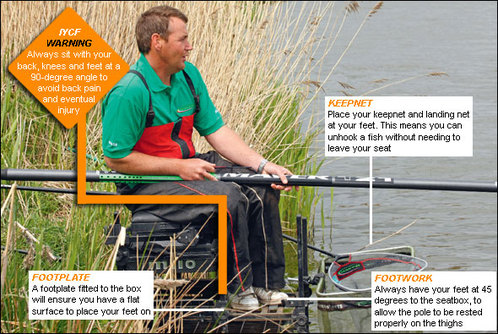
Holding the pole
Assuming you are right handed, rest the pole on or across your knees with your left hand supporting the pole toward the end of your knee. Rest your right forearm along the end of the pole and gently but firmly grip the pole with your right hand. This is one of the most comfortable ways to hold the pole and goes a long way to prevent backache when fishing for long periods of time.
Fish on!
The float goes under! The strike involves pushing down slightly with your right elbow and lifting slightly with your left hand. No need to strike aggressively as a downward motion at the butt end of an inch or two will be greatly magnified at the tip 11 or 12.5 metres away from you.
Gauge the size of the fish by the amount of elastic it pulls from the pole tip. If it is a small fish, simply unship the pole by feeding it backwards onto your roller. When you have the topkit to hand pull it apart from the rest of the pole then simply raise the pole tip topkit high. The fish will surface enabling it to be netted or if small enough, swung to hand.
If it's a big one - a fair length of elastic will have been pulled from the pole tip. Don't panic! Keep the pole low and keep a slight angle between the pole tip and the running fish. Make sure you never point the pole directly at the running fish as this could lead to loosing your top sections as the fish tries its best to get away. Keep a tight line between pole and fish. The elastic will be doing its job, absorbing the shock from the lunging, fighting fish.
Eventually the fish will start to tire, now is the time to smoothly unship the pole behind you and onto the roller.
As the fish is much larger and has pulled more elastic, it will be necessary to break the pole down sooner, possibly at the 4 th or 5 th section, depending on size.
Continue playing the fish until it is within reach of your landing net.
Swiftly raise the pole - the fish will surface, then quickly and smoothly draw the fish over the landing net. Try not to scoop the fish as this will spook it.
With a bit of practise, pole fishing can be an extremely enjoyable and rewarding form of fishing resulting in large weights of fish being captured - Why not give it a go.
Assuming you are right handed, rest the pole on or across your knees with your left hand supporting the pole toward the end of your knee. Rest your right forearm along the end of the pole and gently but firmly grip the pole with your right hand. This is one of the most comfortable ways to hold the pole and goes a long way to prevent backache when fishing for long periods of time.
Fish on!
The float goes under! The strike involves pushing down slightly with your right elbow and lifting slightly with your left hand. No need to strike aggressively as a downward motion at the butt end of an inch or two will be greatly magnified at the tip 11 or 12.5 metres away from you.
Gauge the size of the fish by the amount of elastic it pulls from the pole tip. If it is a small fish, simply unship the pole by feeding it backwards onto your roller. When you have the topkit to hand pull it apart from the rest of the pole then simply raise the pole tip topkit high. The fish will surface enabling it to be netted or if small enough, swung to hand.
If it's a big one - a fair length of elastic will have been pulled from the pole tip. Don't panic! Keep the pole low and keep a slight angle between the pole tip and the running fish. Make sure you never point the pole directly at the running fish as this could lead to loosing your top sections as the fish tries its best to get away. Keep a tight line between pole and fish. The elastic will be doing its job, absorbing the shock from the lunging, fighting fish.
Eventually the fish will start to tire, now is the time to smoothly unship the pole behind you and onto the roller.
As the fish is much larger and has pulled more elastic, it will be necessary to break the pole down sooner, possibly at the 4 th or 5 th section, depending on size.
Continue playing the fish until it is within reach of your landing net.
Swiftly raise the pole - the fish will surface, then quickly and smoothly draw the fish over the landing net. Try not to scoop the fish as this will spook it.
With a bit of practise, pole fishing can be an extremely enjoyable and rewarding form of fishing resulting in large weights of fish being captured - Why not give it a go.
2. A guide to Waggler fishing for the absolute beginner.
The reason I decided to include this very basic and comprehensive guide is because it also deals with some very important fishing etiquette that should be the foundation of any style of fishing. The detailed step by step guide will provide the new as well as the not so new angler with a good understanding of Waggler fishing.
Fish welfare
The welfare of the fish is paramount to the future of fishing and where fish are returned that are without injury.
Preferably use barbless hooks as these do less damage to fish. They are a lot easier to remove as well.
Handling fish
All fish are covered with a protective layer of slime and this acts as the first line defence against parasitic infections, bacteria, and other diseases that a fish may contract.
When you catch a fish you must make sure you don’t remove too much of this protective coating, so always wet your hands before handling the fish and never use a cloth to hold a fish. ALWAYS unhook fish quickly but carefully. If the fish is too large to hold, don't unhook it on the ground as this can damage it and remove the slime, use an unhooking mat. With a smaller fish hold it tightly so that it doesn’t flap about and slip out of your hands onto the ground but don't hold it too tight or you may damage its internal organs.
Unhooking a fish.
Never pull on the line to remove a hook from a fish - this WILL NOT work without seriously injuring the fish.
If the fish is too large to hold in one hand then lay it on an unhooking mat for removing the hook (unhooking mat = padded cushion to protect fish from being injured on the ground)
If the fish is lip hooked you may be able to remove it using your fingers. If the fish is hooked inside its mouth and you can see the hook use a disgorger (a thin plastic or metal rod with a slot in the end). Hold the line tight and put the slot of the disgorger over the line and slide it along the line until you reach the hook. Push the hook in the opposite direction to the way it went in until it is free and then carefully remove it. If the fish is deeply hooked and cant be removed it is better to cut the line as close to the hook as possible. The hook will dislodge itself or will eventually rust away.
Where to go fishing
For safety reasons always tell someone where you are going and what time you will be back.
As a beginner try to choose a stillwater (pond or lake) for your first fishing trip with a fishing depth of around 6 feet.
If you have angling friends they will know where to go fishing and will probably ask you to accompany them on a fishing session.
Littering
Make use of bins provided or if not, take all your litter home with you. I personally hate it when I turn up to fish and find the spot I have chosen littered with old fishing line and rubbish left by some one who calls himself an angler. It is a filthy habit and gives all anglers a bad name. After all, a big part of fishing is to enjoy the view and natural beauty.
The basic fishing tackle you will need for Waggler / float fishing
Fishing rod
Choose a 'float' fishing rod of around 12 foot with a 'through' action. (bends in a curve from the handle to the top of the rod). A suitable 'float' fishing rod for the beginner can be bought for around £20 to £30.
Fishing reel
Choose a 'fixed spool' reel. This will cost you from as little as £10 to well in excess of £100
Some of the things to look for in a good reel are:
> 6+ bearings
> One-way clutch instant anti-reverse bearing
> Forged aluminium alloy spool with round clip
> Computer balanced rotor
> Soft touch handle knob
> Special anti-twist line roller
> Thick bail-arm system
> Intelligent Oscillating System (IOS)
Fishing line
For the beginner I recommend starting with 4lb monofilament fishing line. A 100 yards (metres) spool of general purpose fishing line will cost around £3 to £6. Preston, Maver, Drennan, Berkley and Daiwa are good choice fishing lines. In order to minimize line twist during the loading of the line, looking down at your reel, turn the handle as if you are retrieving the line and note the direction that the bail rotates around the spool. Most fixed spool reels rotate in a clockwise direction. Now lay your spool of line on the floor and look at which way the line will come off it (clockwise or anti clockwise). If its clockwise fine if not turn the spool over. Now from the top ring on your rod, thread the line through your rod rings to the reel, open the bail arm and tie the line to the spool of your reel. Now, this is the tricky bit, close the bail arm and holding the rod with the line between two fingers to keep it taut start reeling the line onto your reel, keeping it taut, until all the line is on your reel. If you can get someone to hold the line for you, it makes it a lot easier.
Waggler floats
There are many different kinds of floats for different waters and types of fishing, but for now choose a couple of 3AAA waggler floats. (in case your unlucky and lose one) I personally prefer the already loaded floats. These floats are already weighted and cock (stand upright in water) themselves and saves you the effort of putting the correct number and size shot on the line. Wagglers will cost from around £1.50 each.
Fishing hooks
As a beginner a packet of barbless, size 14, wide-gape, hooks to nylon (breaking strain 3lb) should get you started. Price around £2. As you become more accomplished you will be able to scale down the hook and line size.
Split shot
You can buy a dispenser with a mixture of shot sizes (around £7).
Disgorger (essential)
This will be used when you catch your fish to remove the hook from the fish’s mouth. (price £50p to £3)
Plummet
This is a weight with a soft insert at the bottom that wont blunt you hooks point. This will be used to check the depth of the water and to set the waggler at the required depth.
Landing net and handle (essential)
This is an essential piece of tackle for landing your fish. Choose one with fish-friendly material which will prevent damage to the fish. Nets are priced from £5 and a 3 meter handle from around £15
Scissors
For cutting the fishing line when you have tied your hook length to the main line and also to cut the line if the fish is deep hooked.
Seat box or chair
To sit on of course! If you have a seat box fine, if not a deck chair or similar will do. Fishing can be a waiting game and if your not catching having something to sit on will make your outing much more enjoyable.
Rod rest
To put your rod into if your waiting a while between bites
Bait box or container
For your bait - an old cleaned butter container or other plastic container with lid will do. Remember to make plenty of 'small' holes in the top when using live bait like worms.
Bait
There are literally hundreds of types of fishing baits. I would suggest you start out fishing using corn, bread paste or soaked sinking pellets.
Tackle box
A tackle box is good investment if you decide to take up the sport of fishing seriously and will be necessary to keep all of your accessories in i.e. floats, hooks, shot, plummet and scissors etc. Believe me, when you get into fishing its surprising how much gear you amass!
How to set up your fishing spot and tackle
Normally this would be done away from the water so that any fish in the swim are not scared away. You want to be comfortable while your fishing so place your seat box or chair in a safe position near the water and position the rod rest a short distance in front of it so that when you are sitting down you can rest the front of your rod on the rod rest and the handle on your lap. Push the rod rest into the ground so that when your sitting holding your rod, the tip is just touching the water.
Connect your landing net and handle and place it to the side within arms reach.
Place your bait tub and everything else close to hand.
Setting up your rod.
When you put your rod together make sure that the guides (rod rings) are aligned. Hold the rod up and from the guide nearest to the handle, look down the length of the rod to see if all the guides are in line.
Next you need to attach the reel to your rod.
On the handle of the rod will be two ferrules. Push these near to the top of the handle and slide your reel feet under them with the spool facing the top of the rod. Turn the reel to make sure that the spool is in line with the rod rings. Slide the ferrules onto the reel feet fairly tightly to hold it in position. Once the reel is secure you can ope the bale arm of the reel and start to pull line of and thread the line through all the rod rings and pull about 6 to 8 foot through the top ring.
Setting the drag.
This is a safety mechanism within the reel that will allow the spool to turn when a certain tension is reached as line is pulled from the reel. It safeguards against the line snapping. Depending on the reel, the drag will be a screw device and will be either at the back of the reel or the actual screw that holds the spool in place. If you haven't already set you reel drag prior to fishing you can set it using the instruction below.
First tighten the drag. Now with the bail arm closed, take hold the rod in one hand and fishing line in the other. Pull on line at an angle from the rod until you think it will snap. The screw needs to be slackened until the line, under tension, only just starts to come off the reel before snapping.
Now to 'rig up'.
A rig is the terminal tackle i.e. your float, shot and hook.
Attach your float by threading the line through the small eye at the base of the float and slide it up the line about 4 foot. Using two AAA shots, pinch one onto the line either side of and close to the float to hold it in place. At this stage some anglers add all the shot needed to 'cock the float ' (make the float sit at the right level in the water with quarter of an inch showing - I do this later).
Knot a small loop at the end of the main line. Now tie your "hook to nylon" onto the end of the reel line by interlocking the two loops About 4 inches from the hook pinch on a number 4 shot. (you will add more shot to set the float shortly)
Now you need to check the depth of the water you are fishing.
Note. Don't try to fish too far out to start with. The furthest you should fish is as far as you can easily cast your bait.
Plumb the depth
Depending on the plummet you bought, either clip it onto the number 4 shot or pass the hook through the loop at the top of the plummet and lightly push the hook into the cork/foam rubber aiming the point of the hook along the cork so as not to hit the lead / metal and blunt it.
Now you have to cast your line to the spot you want to fish.
Reel the line in so that the float is about 2 foot from the rod top.
Hold the rod in one hand, near the reel. With the rod pointing up in the air in front of you and the plummet off the ground, using the hand holding the rod, put your forefinger on the rim of the spool to stop line coming off and open the bail arm. Using a slow to and fro pendulum motion, swing the plummet into the anticipated fishing area, taking your finger off the reel spool to let the plummet pull line off the reel and land where you want it to.
With the plummet settled on the bottom of the pond, if the float sinks your rig is set to shallow. If the float lies flat on the water or is sat in the water showing more than quarter of an inch your rig is set too deep.
Reel the rig back in and move the float up or down accordingly and try again. Do this until the exact depth is found with just the tip of the float showing about a quarter of an inch above the water surface.
Note. You want your hook to lie either on the bottom or just slightly above the bottom.
When you have plumbed the water there will be a 4 inch difference between using the clip on plummet and the other plummet.
i.e. if you were using a clip on plummet attached to the number 4 shot, the depth of the water is the distance between the number 4 shot and your float. With using the other plummet the exact depth is from hook to float. To compensate for using a clip on plummet. move the float down the line 4 inches. Your hook is now just touching the bottom..
Now remove the plummet and under the float, add enough shot needed to cock the float. It can be one more AAA shot which will give you a total of 3 AAA shots (same rating as your 3AAA Waggler) or you can have a couple of smaller shot that adds up to the same weight as an AAA.
With wagglers the general rule is 80% of the weight around the float and the rest placed 2 thirds of the way down the line. Your rig is set up for ease of casting. When you are confident at casting you can alter the shotting pattern.
Tip. To stop your line getting tangled up when you are not using your rod, with the bail arm open let out enough line so that you can place the hook onto the rod guide nearest the handle. Now carefully reel in the line and take up the slack so that your float and line are parallel to your rod and there is a sleight tension.
That's it for setting up, now your ready to start fishing.
Please bear in mind that this is a basic set up for Waggler fishing. There is a LOT more to setting up your tackle and coarse fishing depending on the fish you target, the tackle your using, floats shotting pattern, hooks, waters i.e. river, lake or canal etc.. You will learn all this in time. For now I am aiming to help you with getting set up and to be able to cast.
As a beginner you will make mistakes (like getting your line tangled up) and may lose your temper and learn a few words - this is all part of learning to be an angler. Persevere and you will get things right.
Your all tackled up and the fish are waiting.
Start off by throwing about a dozen (12) pieces of your hook bait into the area you will be fishing. This is called, 'loose feeding', and it is done so that the fish get used to seeing your bait and to try and tempt the fish in the area to take your baited hook. It is important to feed exactly the same spot, the fish will feed in a small area and this will contribute a lot to your success.
Now take your bait and put it on your hook. Make sure the point of your hook is exposed.
Casting.
Casting can be tricky and takes time to learn but with practice you will get it right.
- Make sure there are no trees or other obstacles behind you.
- Thinking of a clock (with 12 o'clock pointing straight up and 10 o'clock in front of you) hold the rod with one hand near the reel (if you are right handed this is the hand near the reel and vice versa) and the other near the butt of the rod. Point the top of the rod to 10 o'clock in front of you.
- Let out enough line so that your hook is around 3 feet off the ground.
- Open the bail arm of the reel and use your forefinger to trap the line against the rim to stop any line coming off.
- Move the rod back over your head to the 2 o'clock position and let your rig hang steady
- now with an overhead motion punch the rod forward and stop at the 10 o'clock position. This needs to be done in one smooth movement . . QUICKLY . . .
- A split second before the 10 o'clock position remove your finger from the spool to let your rig fly out and pull line off the reel.
- Just before it hits the water lower your rod parallel with the water and put your finger back on the spool to stop the line coming off. This should cause your rig to fall into the water in a straight line with the hook furthest from you.
- Now dip the rod tip under the water and reel in to where you intend to fish (this will sink the line and help stop your float drifting with the wind blowing across the water)
When removing your finger from the spool to let your rig fly out, do not let go of the rod.
If you cast a bit further than you intend to fish then you can dip the rod tip under the water and reel in to where you intend to fish. This will also help to sink the line.
You will no doubt have a few mishaps but stick at it. We all mess up sometimes even after years of fishing !
Feeding
After you have cast out throw 6 to 12 pieces of bait around your float. Your hook will sink to the bottom and your float will settle with just the tip showing. Now you watch your float and wait for a bite (a fish attempting to eat your hook bait) this will be noticeable by the float either disappearing under the water or lifting up out of the water. Every couple of minutes throw 6 more pieces of bait around your float. The rule for 'loose feeding' is 'little and often'. You want to tempt the fish but not overfeed them.
Striking and playing a fish
When you get a bite - you must 'strike' (no, that doesn't mean down tools). Holding your rod near the reel and in one swift movement lift it up in an arc to the 11 o'clock position. If you can feel resistance on the line you have hooked the fish. Keeping the line taut, start to reel in and at the same time lower the rod top towards the water so there is a slight angle between rod and line - don't point the rod straight at the fish. If it is a small fish you will probably be able to reel it in and 'net it' (use your landing net).
With a large fish you will need to keep the line taut but let the fish swim about and tire itself out first. If it starts to 'take line' (swim away from you, pulling line off the reel) there isn't a lot you can do about this except keep the pressure on. (this is why you set the drag earlier) You may have to put your finger on the spool to stop the line if it starts swimming too far away. You will learn through experience when to do this.
Note. When striking, as soon as you feel resistance stop lifting your rod or you could pull the hook out of the fish. Always keep tension on the line when playing a fish.
Landing a fish
When you have reeled the fish in close enough so that it can be reached with your landing net, hold the handle of your landing net and place the net in the water. Using your rod and remembering to keep the line taut, guide the fish to your net. When the fish is over your net lift it up to trap the fish (don't chase the fish with the net). A small fish (as a guide a fish up to 4 to 6 oz) can be lifted out of the water, try to do this with a large fish and you stand the chance of the net breaking away from the handle. With a big fish, once its in the net you will have to pull the net through the water closer to the bank and lift the fish out of the water holding the sides of the net itself.
Now you have netted a fish you have to unhook it.
Hold the fish firmly so that it doesn’t flap about and slip out of your hands onto the ground, but don't hold it too tight or you may damage its internal organs.
If the fish is lip hooked you may be able to remove it using your fingers. If the fish is hooked inside its mouth and you can see the hook use a disgorger (a thin plastic or metal rod with a slot in the end). Hold the line tight and put the slot of the disgorger over the line and slide it along the line until you reach the hook. Push the hook in the opposite direction to the way it went in until it is free and then carefully remove it. If the fish is deeply hooked and cant be removed without damaging the fish it is better to cut the line as close to the hook as possible. The hook will dislodge itself or will eventually rust away.
THATS IT, WELL DONE !!!
3. METHOD FEEDER FOR BEGINNERS
The Method feeder is a devastating item of tackle for various fish species as it not only attracts fish to the swim, but it's easy to use and easy to catch fish with! To create this rig you'll need to thread an in-line Method feeder onto your mainline (between 8lb and 12lb is ideal). Next thread a small bead onto your mainline and tie on a strong snap swivel. The hook length you will need should be very short and very robust, again between 8lb and 12lb breaking strain. Because the bait needs to be presented as close as possible to the feeder, an ideal length would be between 3 and 6inches .
Ideal baits for fishing the Method ought to be the best baits being used on the venue at the time, so ask the venue owner or regulars before you arrive to give you an idea of what to use for the best results. Incorperate your hook bait in your ground bait mix so the fish will get a taste for it and feed more freely.
You build 2 layers of ground bait on to the feeder, the first is just enough to cover the frame and needs to be pressed in reasonably hard, if you are burying the hook bait in the feeder, now is the time to add it. Then, using both hands, squeeze a little more groundbait around the frame so that it is completely hidden by the mix and buries the hook bait, give it a good firm press to ensure that the groundbait don't come off when it hits the water.
Ideal baits for fishing the Method ought to be the best baits being used on the venue at the time, so ask the venue owner or regulars before you arrive to give you an idea of what to use for the best results. Incorperate your hook bait in your ground bait mix so the fish will get a taste for it and feed more freely.
You build 2 layers of ground bait on to the feeder, the first is just enough to cover the frame and needs to be pressed in reasonably hard, if you are burying the hook bait in the feeder, now is the time to add it. Then, using both hands, squeeze a little more groundbait around the frame so that it is completely hidden by the mix and buries the hook bait, give it a good firm press to ensure that the groundbait don't come off when it hits the water.
The best rods for this style of fishing are usually fairly stiff like power feeder rods or 2.5lb test curve rods.
The key to a good Method Feeder session, as with all forms of feeder fishing, is to consistently hit the same spot to build up a bed of bait that the carp will be drawn to. Pick a point on the far bank to aim at, always cast towards this feature. The distance can be done several ways, If you are happy with your own skill on judging distance, go with it. Alternatively you can mark the line with a marker or use the line clip on the side of your reel's spool.
The key to a good Method Feeder session, as with all forms of feeder fishing, is to consistently hit the same spot to build up a bed of bait that the carp will be drawn to. Pick a point on the far bank to aim at, always cast towards this feature. The distance can be done several ways, If you are happy with your own skill on judging distance, go with it. Alternatively you can mark the line with a marker or use the line clip on the side of your reel's spool.
A. Bait: Go on the internet, phone fellow Anglers or the local fishing club and ask them about what is working at that point in time. A good selection would normally be Sweetcorn, bread paste, dough, worms or "gelatinized pellets".
B. Hook length: Use a very short and strong hooklength as bites can be savage when fishing the Method. A 3-6in length of 8-12lb line or braid will be perfect.
C. Swivel: A snap link swivel will allow you to tie two or three hooklength and bait them up when you are waiting for a take. Then, after landing a fish you'll be able to release the old hooklength and clip on a new one quickly and easily.
D. Bead: Remember to use a bead to absorb the shock of the feeder on the swivel knot during casting. ( protects the knot from the weight of the feeder.)
E. In-Line Method Feeders (where the line slides through the feeder) are best because if your line snaps the fish can pull the rig free from the heavy weight.
F. Method mix: This is what draws the fish into your swim and keeps them there. The idea is to keep them interested without overfeeding them.
G. Your mainline will need to be tough enough to stand up to the pressure of fishing this technique - 8lb to 12lb mainline is best. get in a good comfortable position, as this technique can be very active, once you start fishing it can be none stop!
B. Hook length: Use a very short and strong hooklength as bites can be savage when fishing the Method. A 3-6in length of 8-12lb line or braid will be perfect.
C. Swivel: A snap link swivel will allow you to tie two or three hooklength and bait them up when you are waiting for a take. Then, after landing a fish you'll be able to release the old hooklength and clip on a new one quickly and easily.
D. Bead: Remember to use a bead to absorb the shock of the feeder on the swivel knot during casting. ( protects the knot from the weight of the feeder.)
E. In-Line Method Feeders (where the line slides through the feeder) are best because if your line snaps the fish can pull the rig free from the heavy weight.
F. Method mix: This is what draws the fish into your swim and keeps them there. The idea is to keep them interested without overfeeding them.
G. Your mainline will need to be tough enough to stand up to the pressure of fishing this technique - 8lb to 12lb mainline is best. get in a good comfortable position, as this technique can be very active, once you start fishing it can be none stop!
